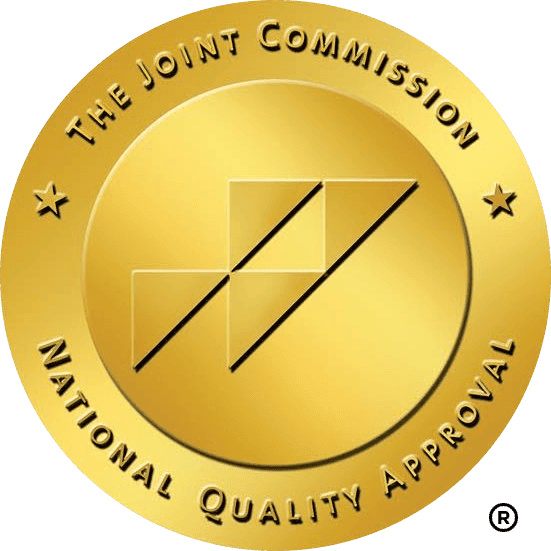If you are searching for ‘mental health treatment’ online, most likely, you or someone you love is in need of help. When the person needing help is your teenager, your choice of treatment can make the difference between your teenager’s short-term improvement and getting well. When the stakes are so high, the decision is both crucial and challenging.
In this blog, we will discuss adolescent mental health levels of severity and help you understand when a teen will benefit from inpatient residential treatment.
Top Insights
About Our Kids: Did you know that about one in five teenagers struggles with mental health issues?
- The Rise of Mental Health Issues Among Teens: One in five teens today suffers from a diagnosable mental disorder. The most common adolescent mental health struggles are depressed moods and anxiety disorders, which are more likely to affect girls more than boys. When left untreated, teens with mood disorders or anxiety have more academic challenges and are more likely to withdraw and misuse substances.
- Teen Struggles: The severity of mental health issues varies from mild to severe and can be identified according to where they manifest. Recognizing the severity and indicators of mental health issues will help you find the right mental health care to help your teens.
- Better Outcomes and Compassionate Care: Turning Winds offers a unique residential treatment experience and a holistic treatment program for teens. Located in the mountains of Montana, Turning Winds combines the natural landscape with innovative clinical practices and varied levels of care to connect, inspire, and empower patients toward better mental health outcomes.
Understanding Teen Struggles
Mental health illness presents differently in adolescents. Mental health disorders range from mild to severe. Sadly, many teens go undiagnosed or untreated until there’s a crisis—especially teens struggling with mild conditions that are often mistaken for typical teen behavior or puberty and worsen over time, turning into defiance and high-risk behaviors.
Turning Winds – A Path to Wellness
Turning Winds offers a unique approach to teen mental health treatment. This residential program blends the serenity of natural surroundings with cutting-edge clinical practices, offering varying levels of care to foster connection, inspiration, and empowerment in young patients.
The Complexity of Teen Mental Health in the Current Era
Today, teens face new pressures that have resulted in a surge of mental health disorders. A lot has changed in the last ten years. For instance, we are now more aware of risk factors, have better diagnostics resulting on more accurate diagnosis for most common mental illnesses.
Teenagers today also face new pressing issues like social media and digital technology affect our teen’s mental well-being. The societal pressures our teens face today are significant and very different from ten years ago.
The prevalence of mental health disorders has been rising, with adolescent girls suffering from depression and anxiety disorders at two to three times the rate of adolescent boys.
If left untreated, these mental health disorders can have a long-lasting impact on an adolescent child and will impact both their academic and social interactions.
Studies show that untreated mental health issues lead to:
- Poor academic performance, with as many as 14% of teens receiving mostly Ds and Fs in high school and middle school.
- Struggle to form and maintain friendships and get along with family. Many struggle with persistent sadness and are likely to isolate and withdraw. These teenagers have an increased risk of suicidal thoughts, self-harm and substance use.
It is important to seek psychological help, such as counseling or therapy, as soon as you recognize the signs of mental health problems.
The Prevalence of Mental Health Disorders Among Teens
- Major depression among adolescents is 47% higher for boys and 65% for girls.
- One in 20 adolescents now meets the clinical criteria for a mood disorder.
- Today, 1-3% of teens are affected by a Borderline Personality Disorder (BPD), and girls are more likely to be affected than boys.
Anxiety disorders have also increased, today we have more diagnosis for:
- Social anxiety disorder
- Generalized anxiety disorder (GAD)
- Obsessive-compulsive disorder (OCD)
- Posttraumatic stress disorder (PTSD)
- Mood disorders
GAD, for instance, presents as excessive fear and worry even when there is no threat and results in low self-esteem. Early intervention and treatment are crucial for your teen’s full recovery from these symptoms or conditions.
Three Levels of Mental Health Illness in Teens
Teenagers’ mental disorders vary in severity and require different interventions:
- Issues like mood changes, stress-related symptoms and mild anxiety typically appears in one setting, like home or school.
- Moderate issues like ADHD, GAD, and moderate depression manifest in multiple settings, such as school and home.
- Major or Chronic Depression, Bipolar Disorder, PTSD or Borderline Personality Disorder are debilitating mental health conditions that severely disrupts daily activities and require intensive intervention.
Turning Winds: A Unique Approach to Teen Mental Health Treatment
Understanding the levels of severity will help you find the care your teenager needs. For teens with moderate or severe mental health disorders, early intervention is best. Turning Winds provides comprehensive inpatient therapy and youth mental health services in a nurturing environment.
If your child is exhibiting signs or symptoms of mental illness or has diagnosed mental disorder, reach out to us. Our team is dedicated to to guiding you and your teen toward a brighter, healthier future. Contact us to explore how we can support your family’s journey to healing.









